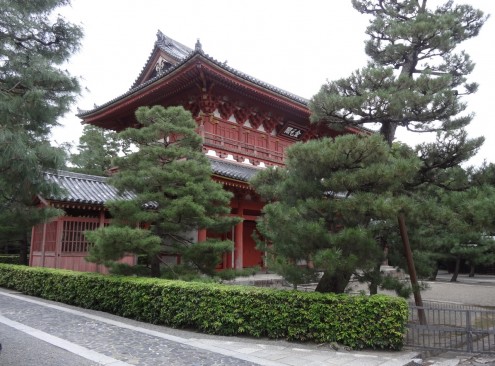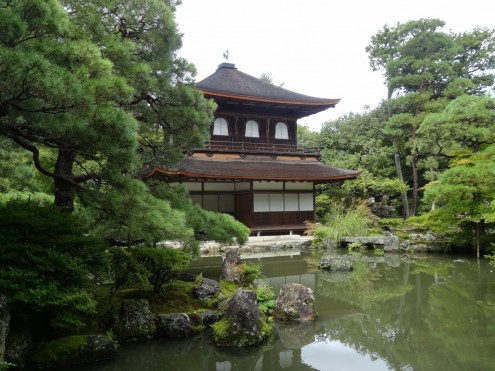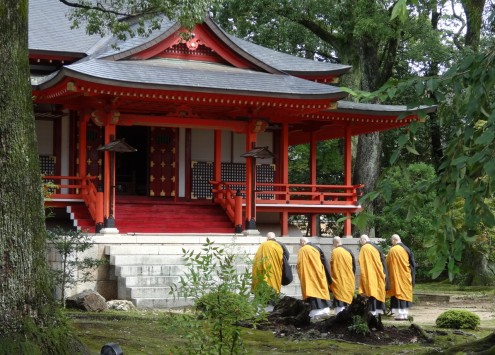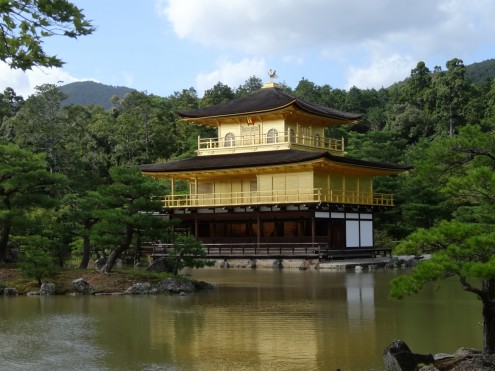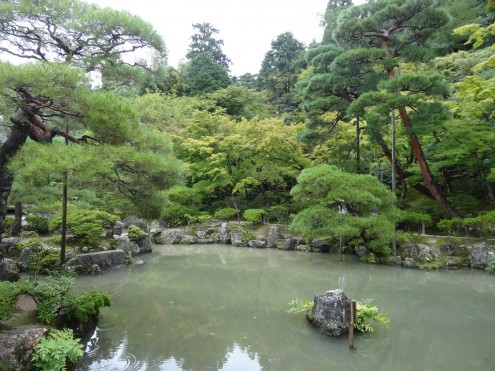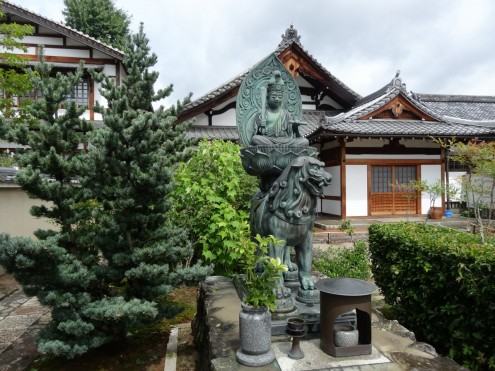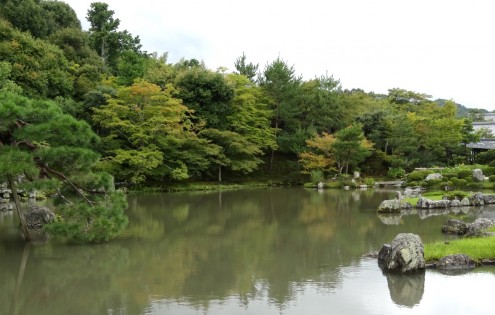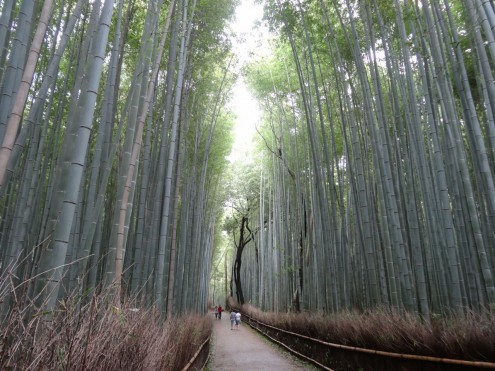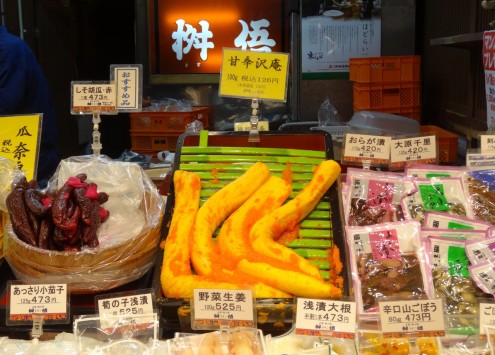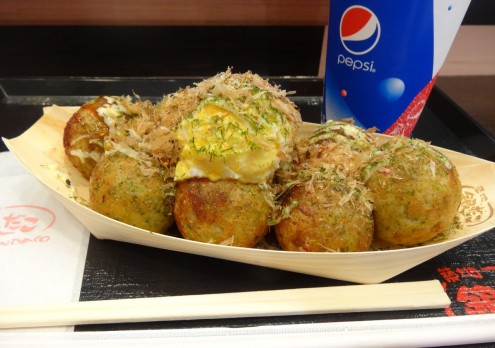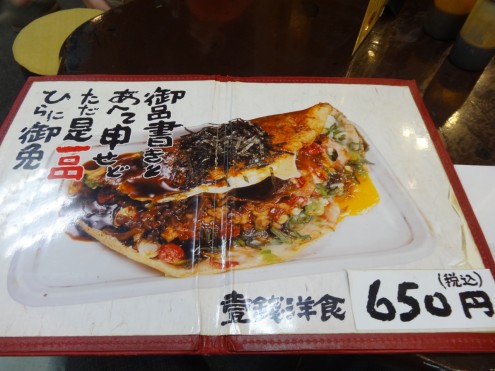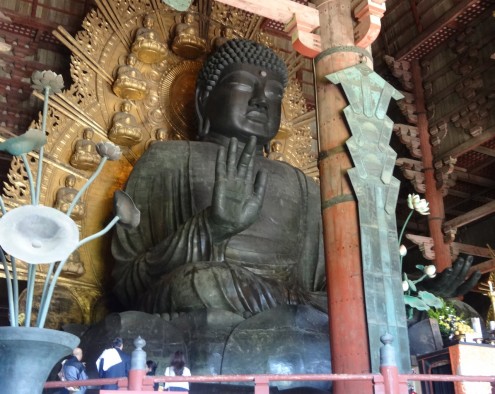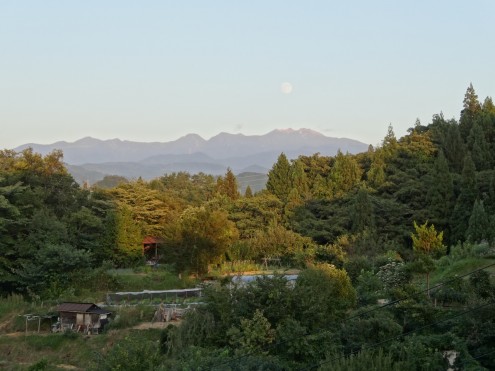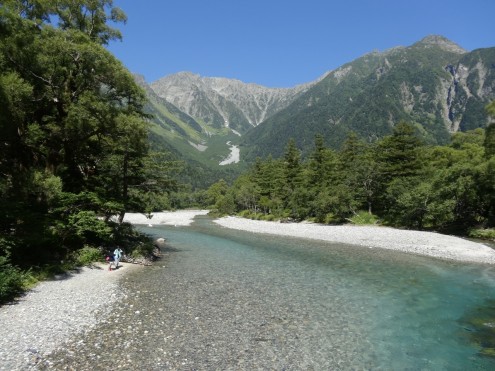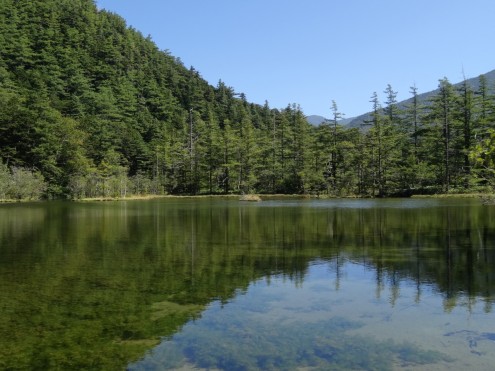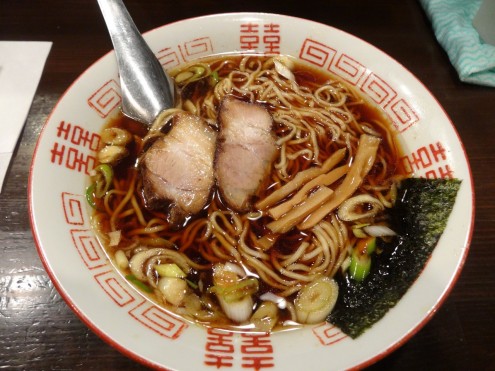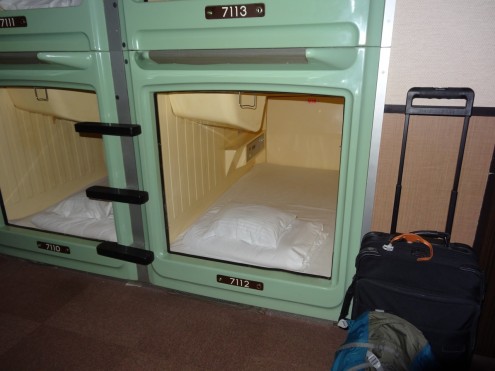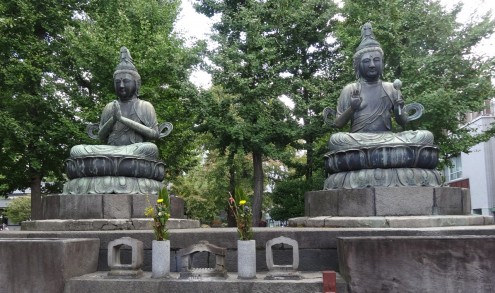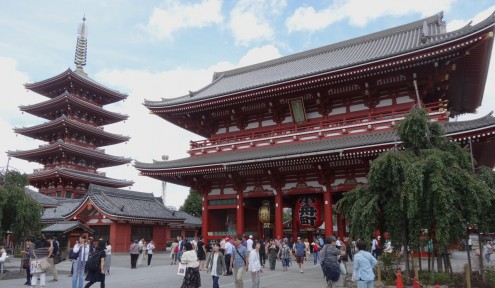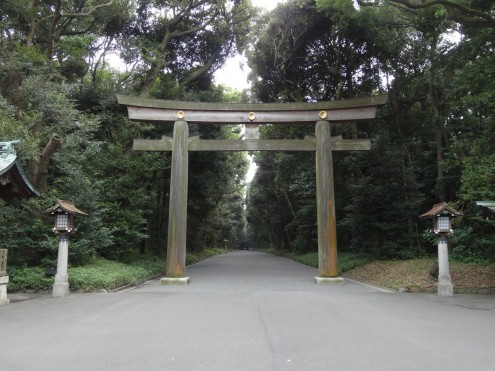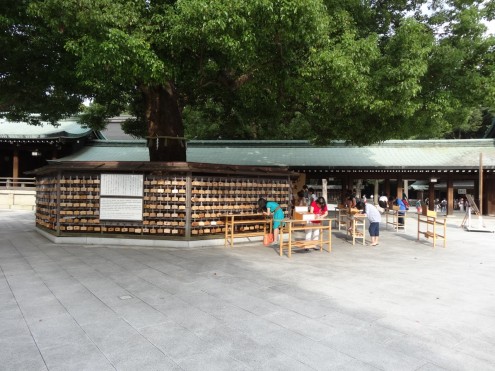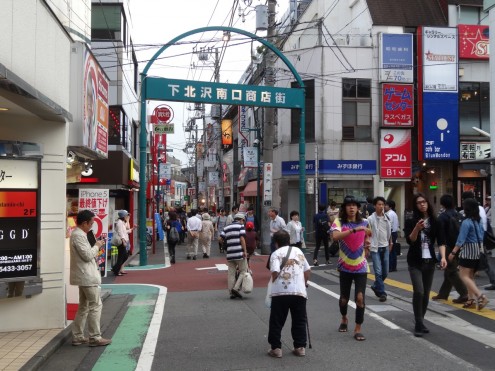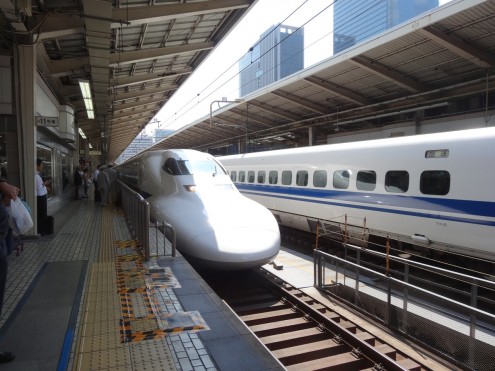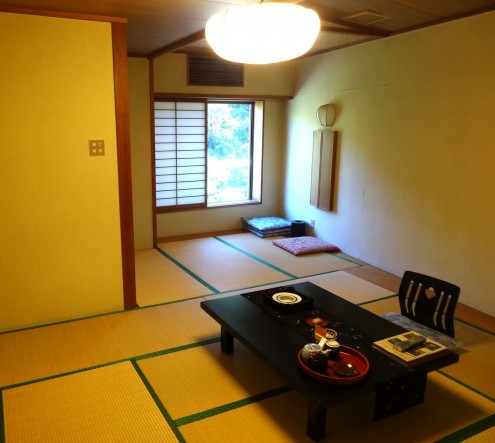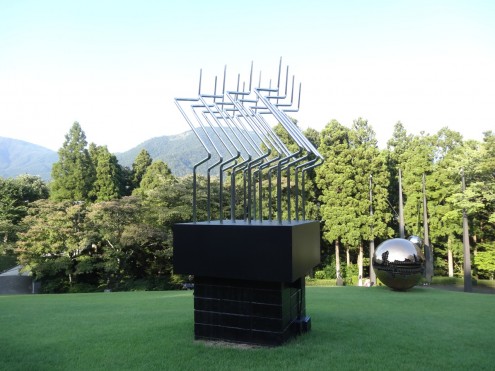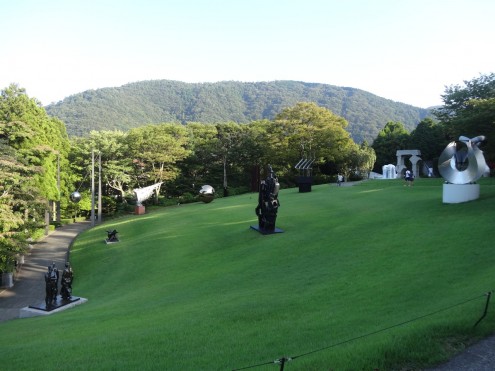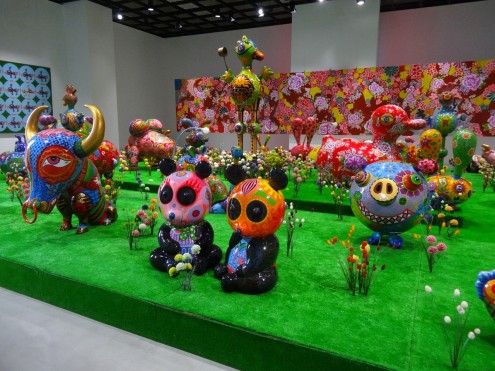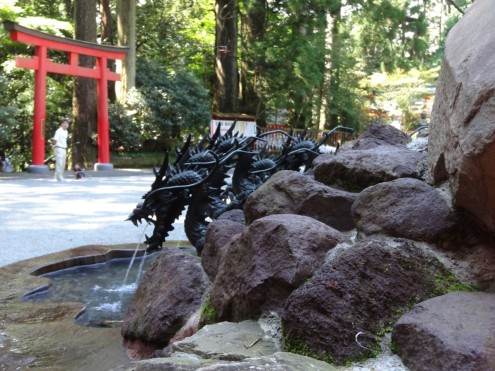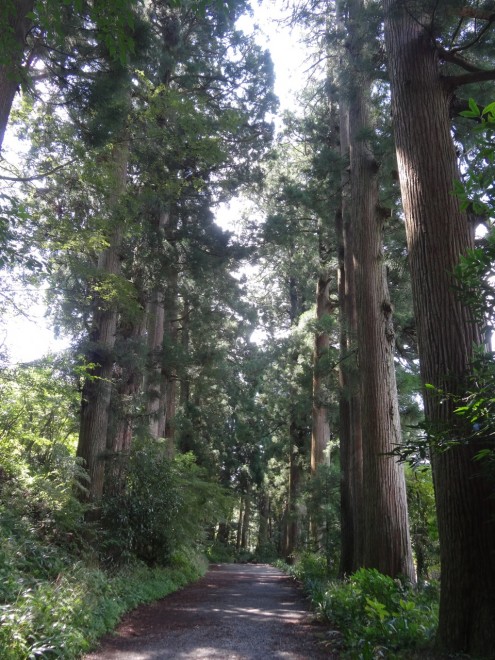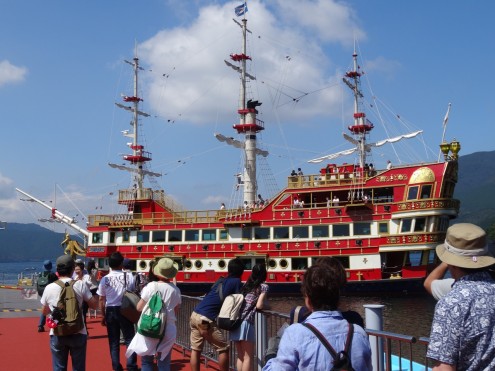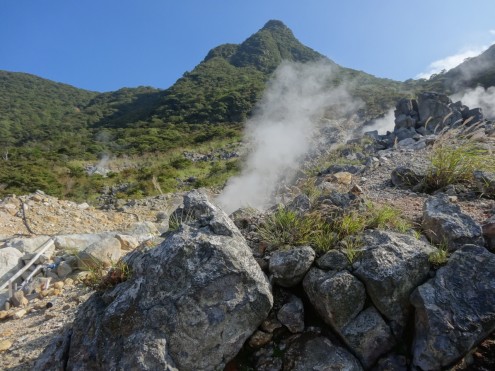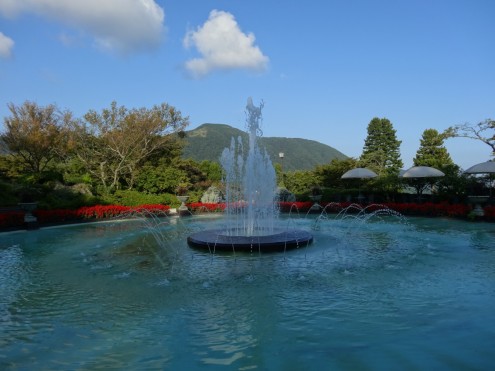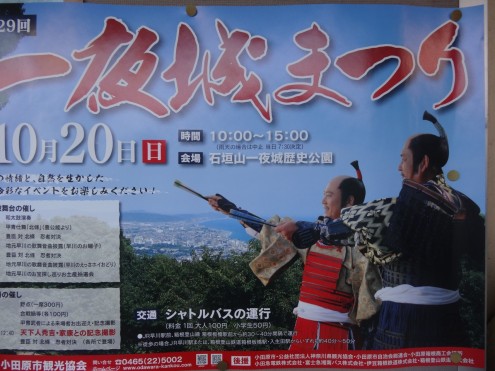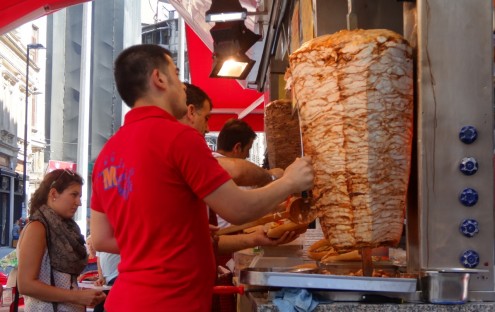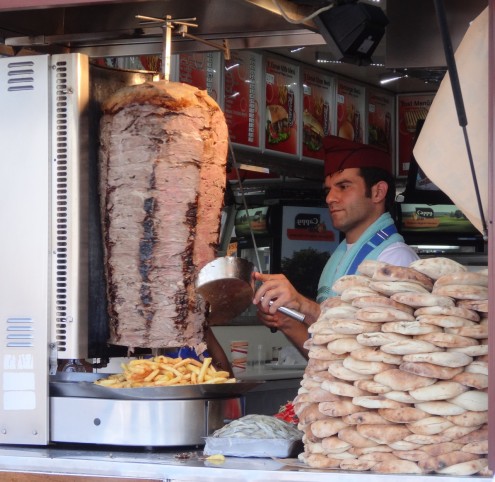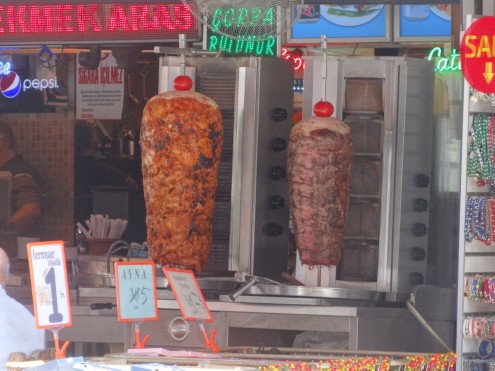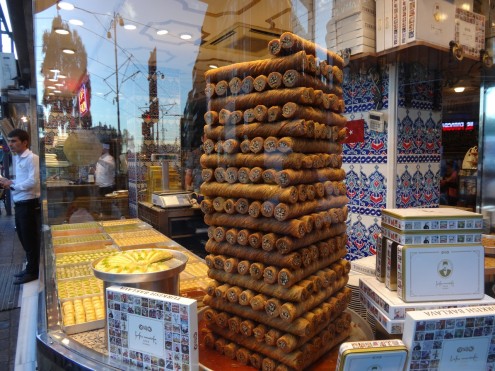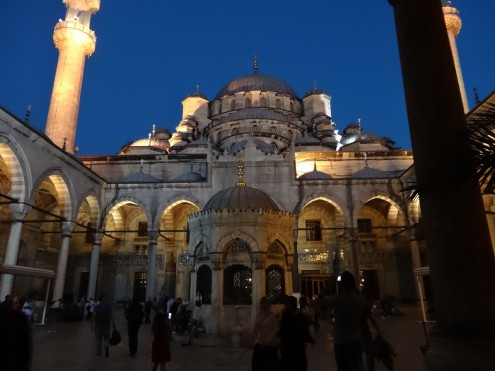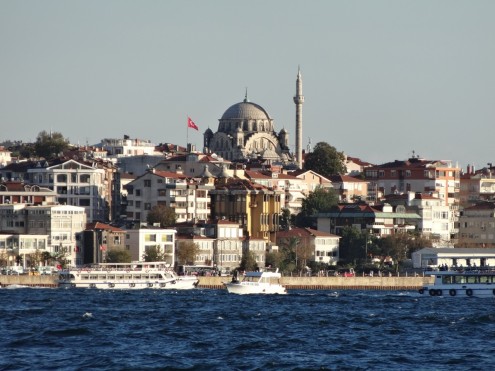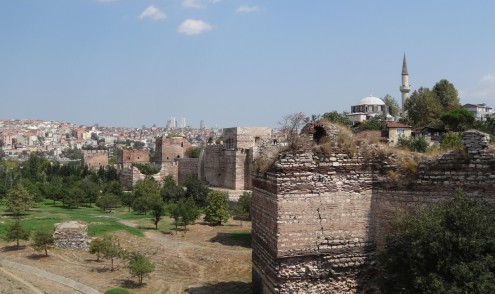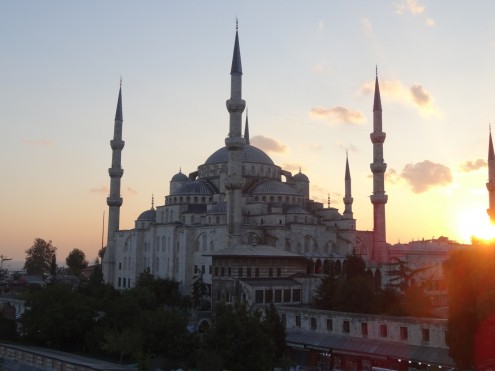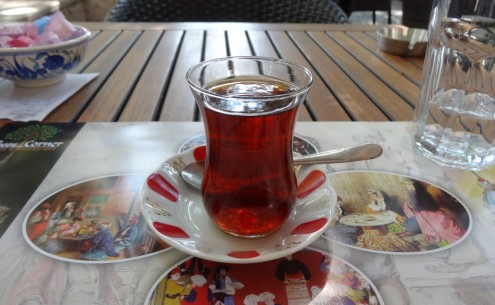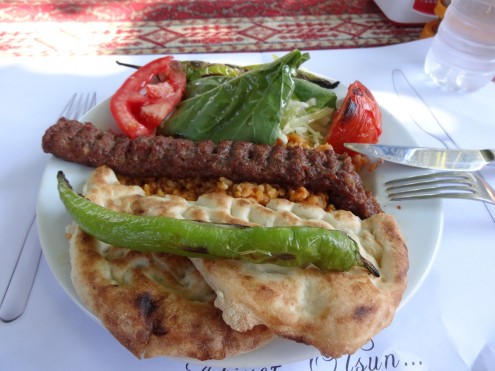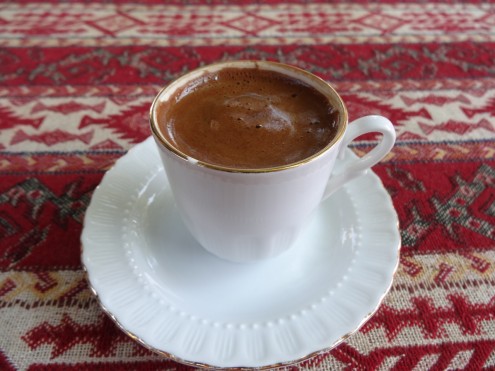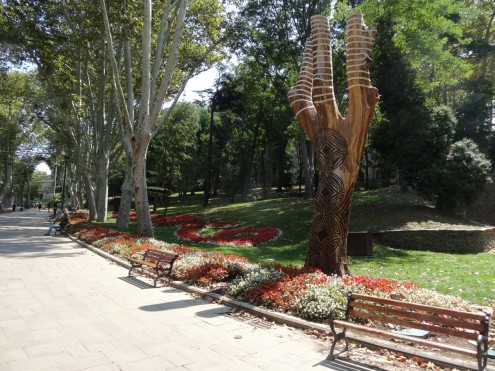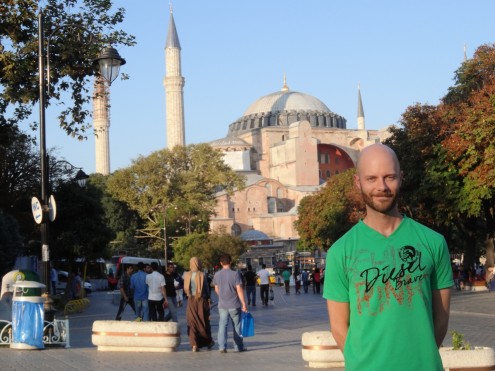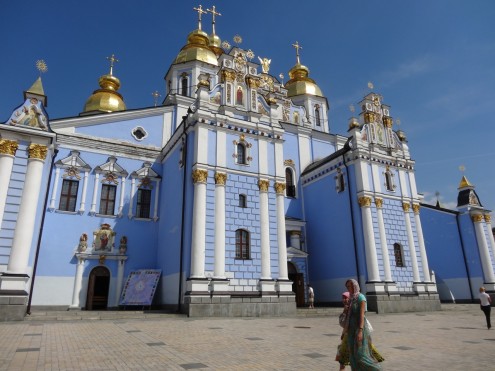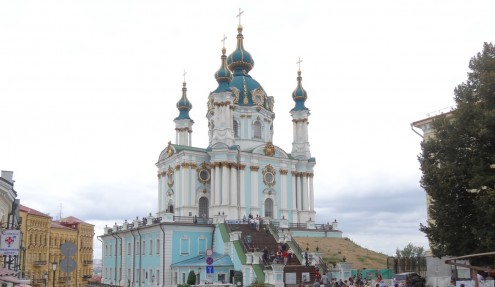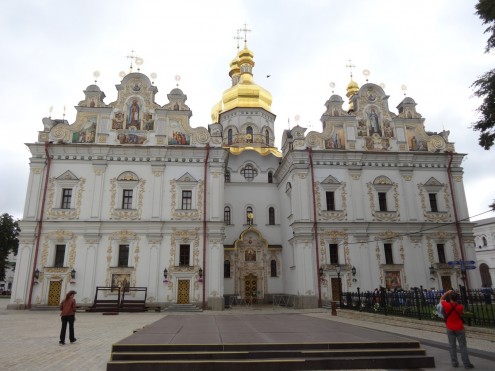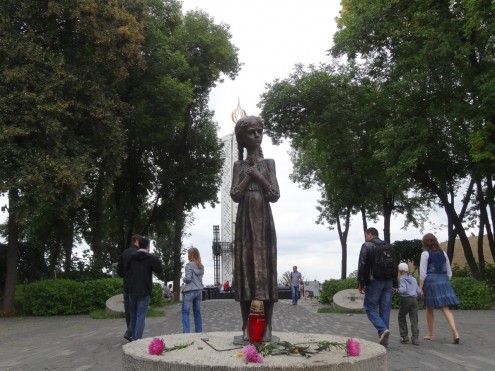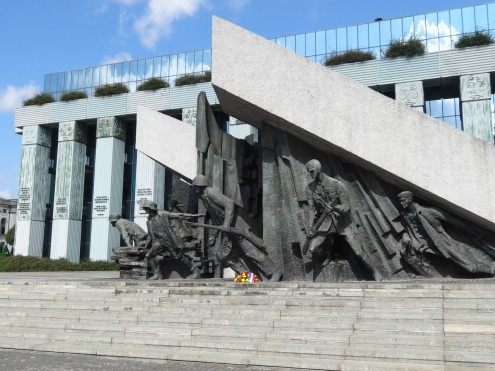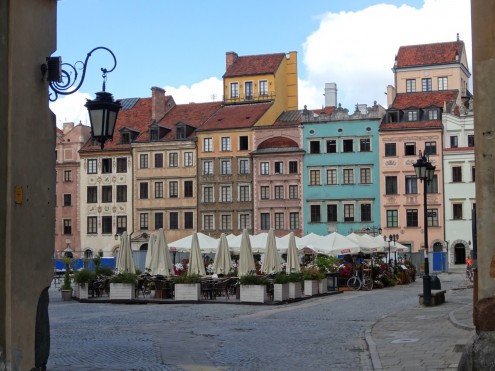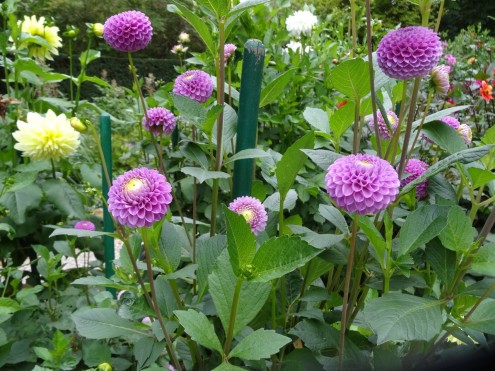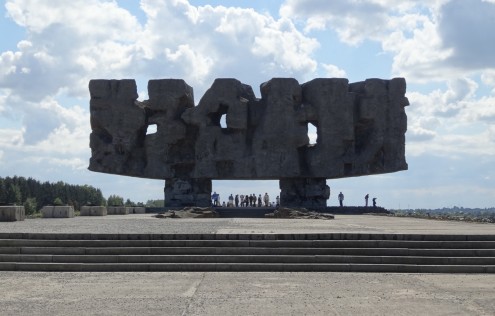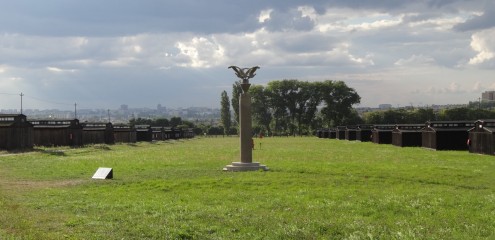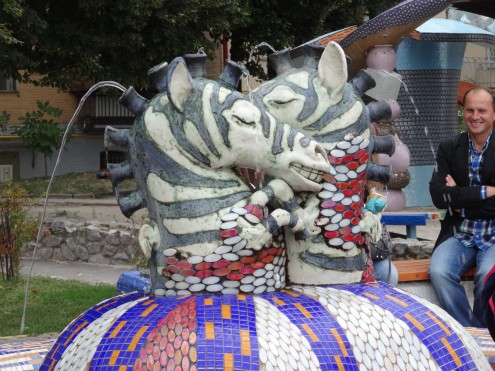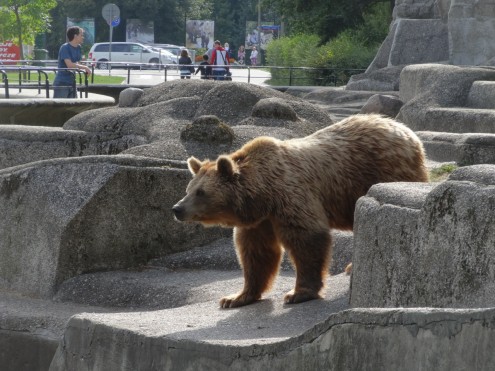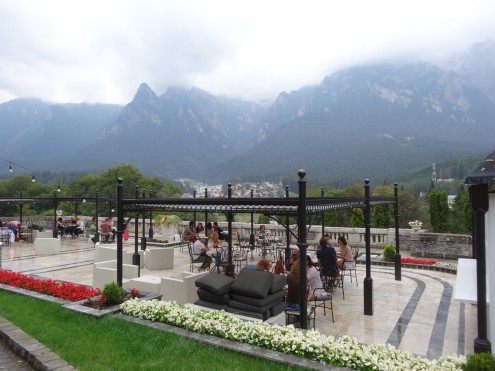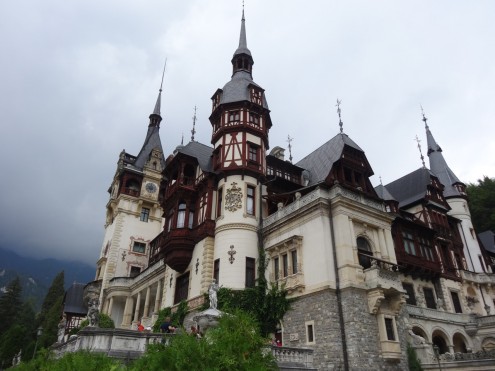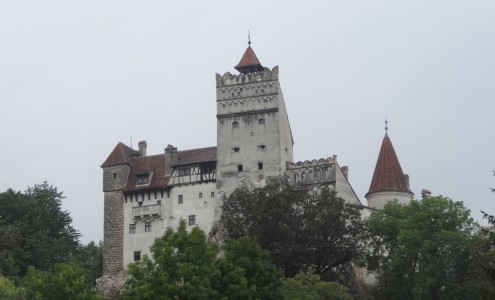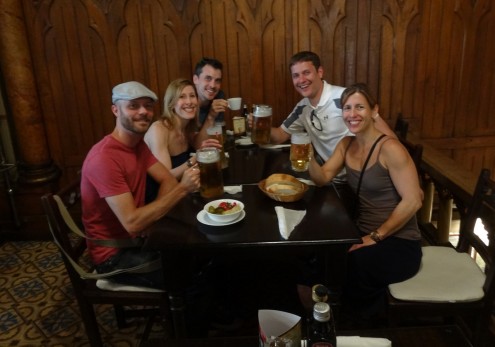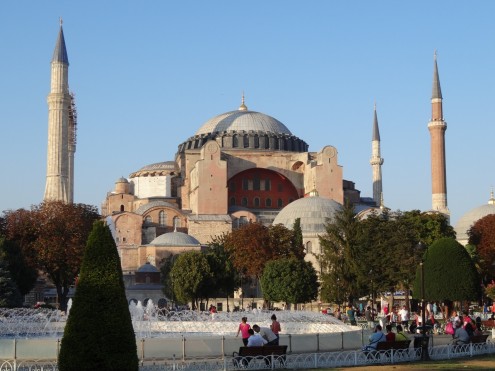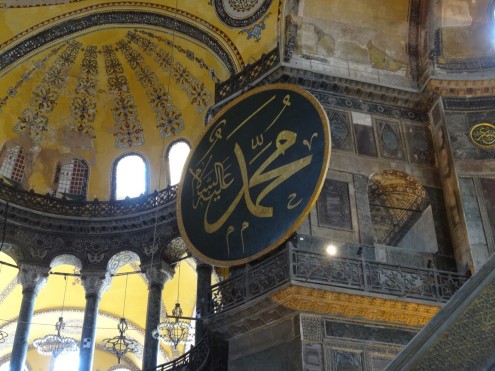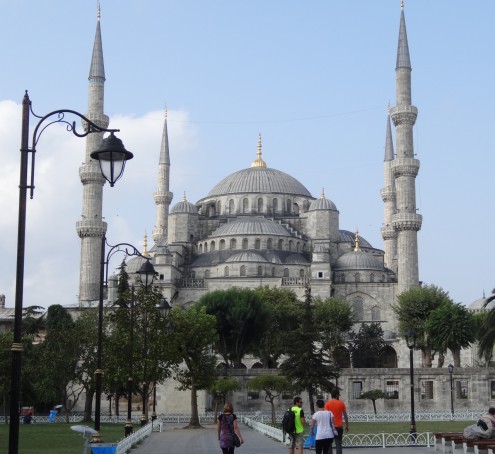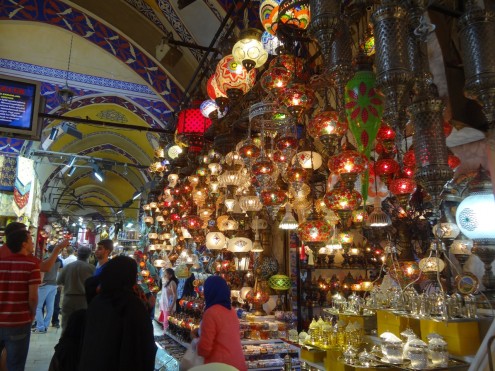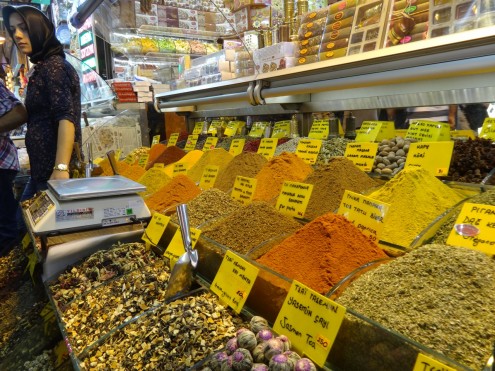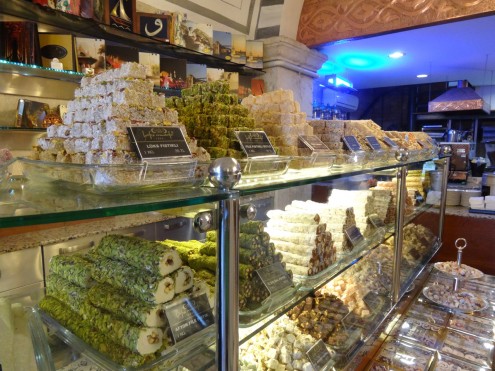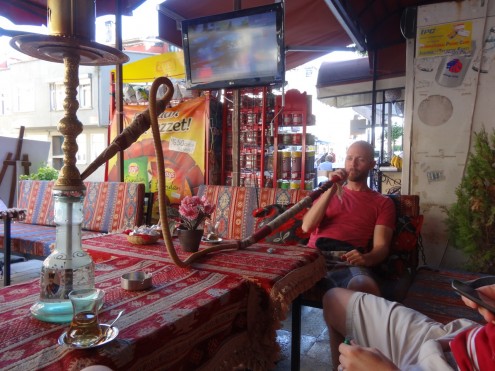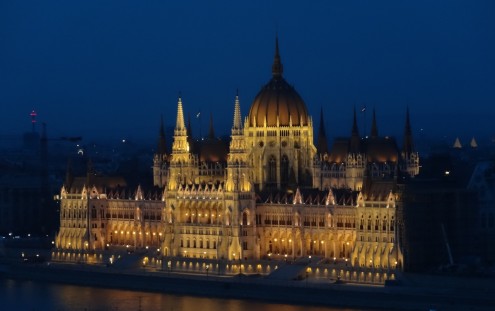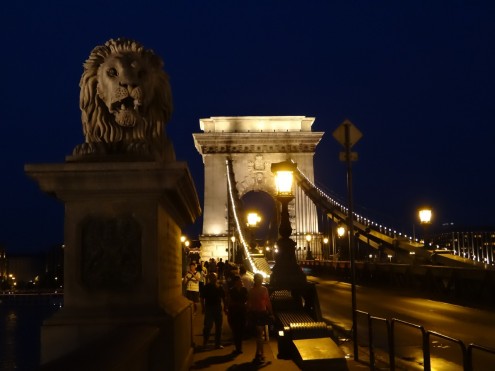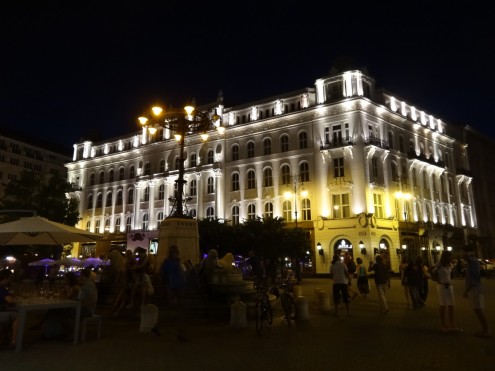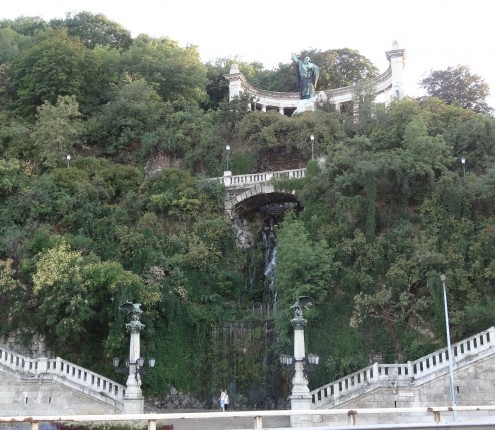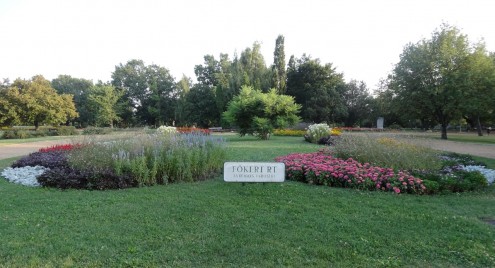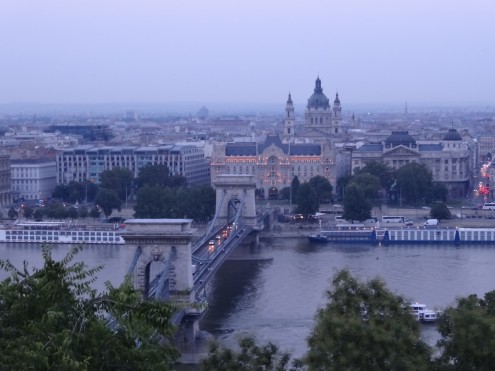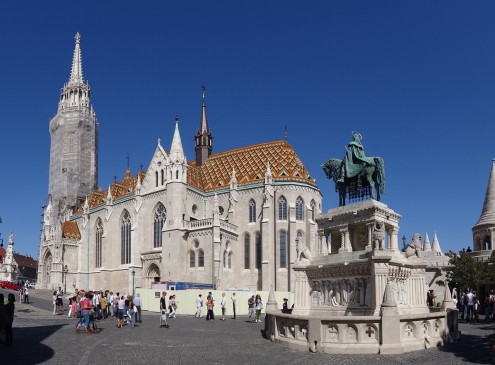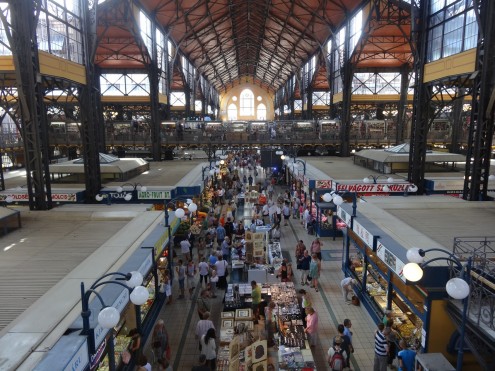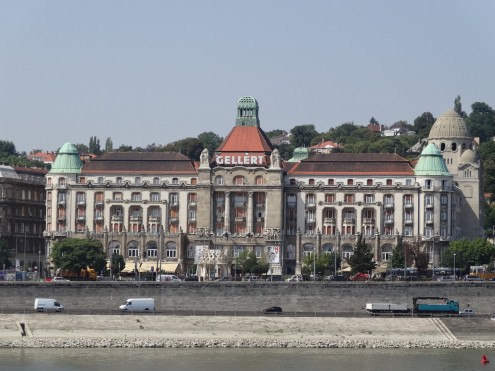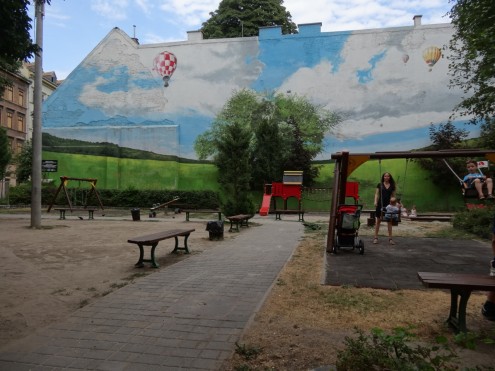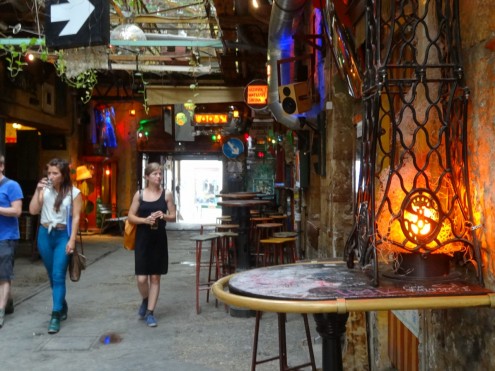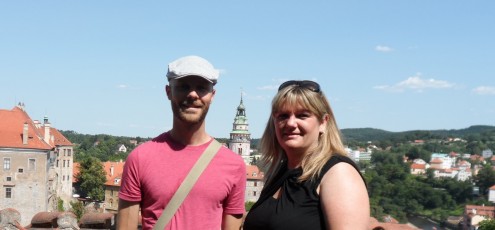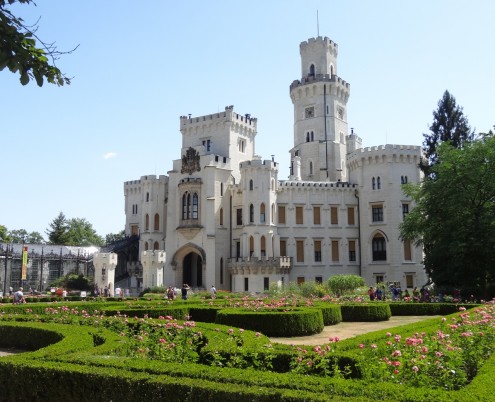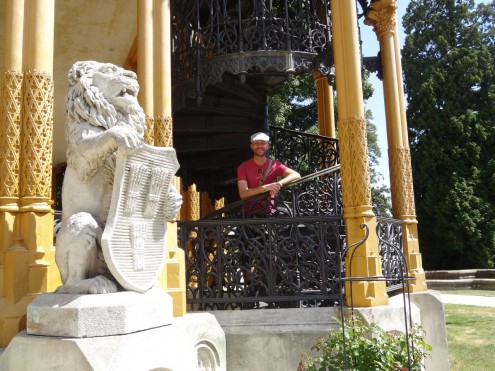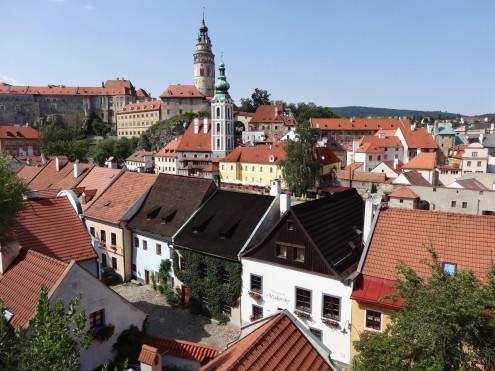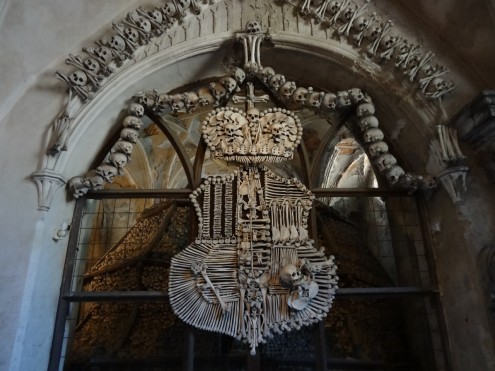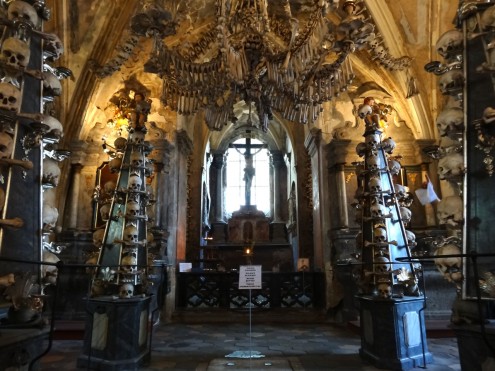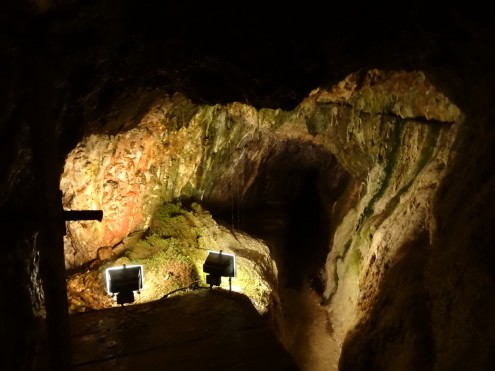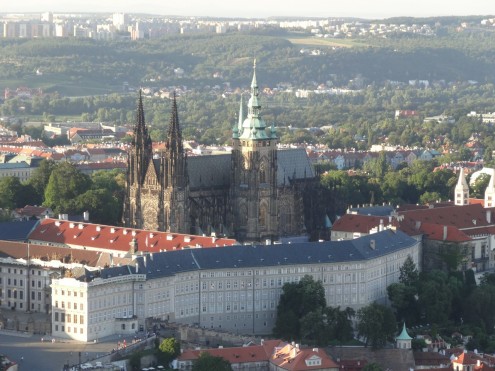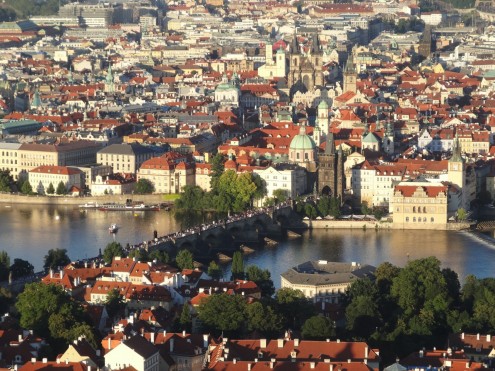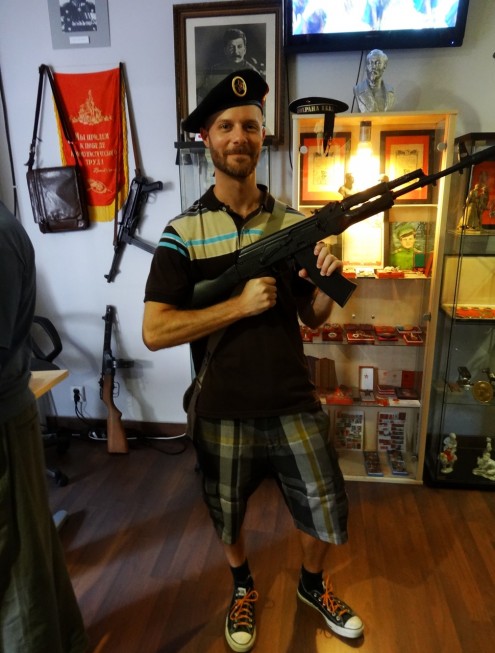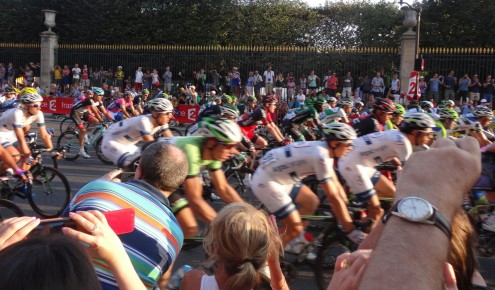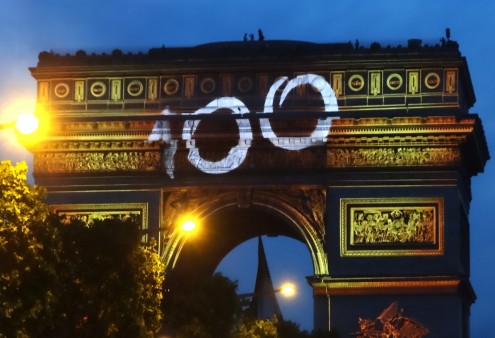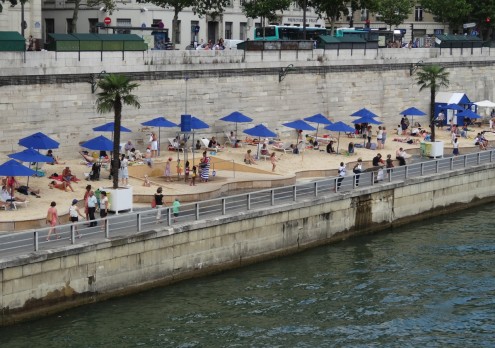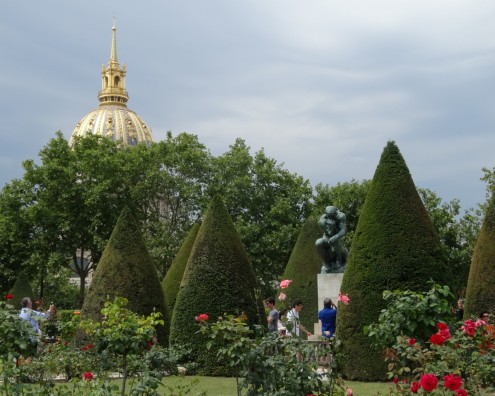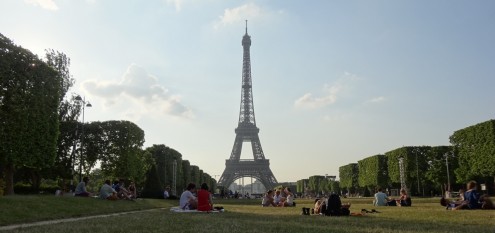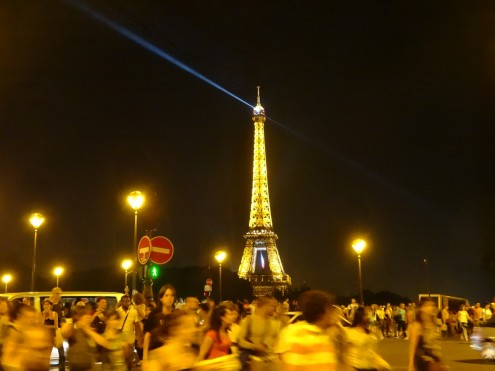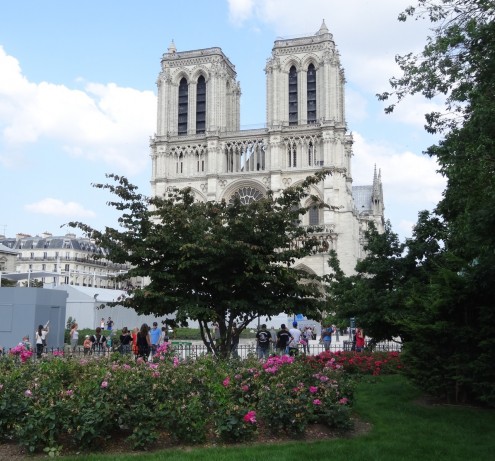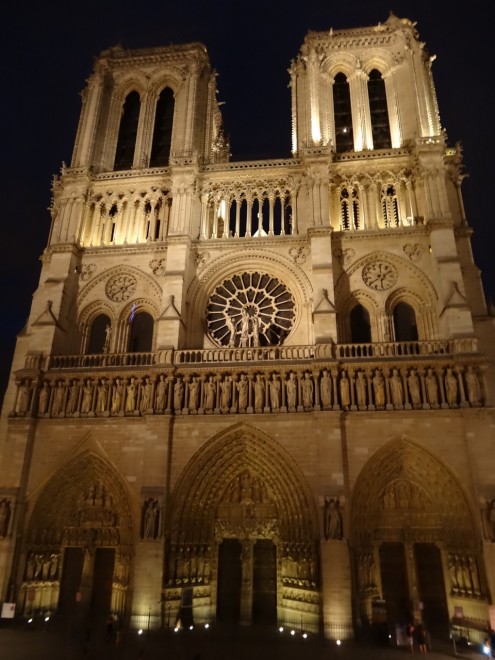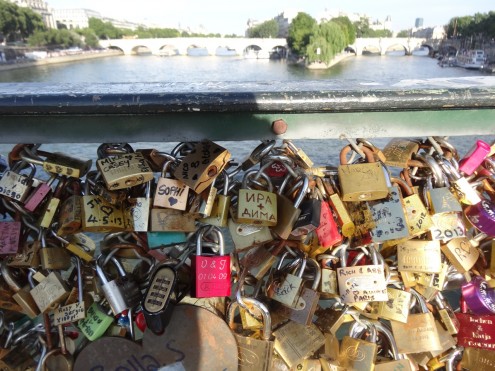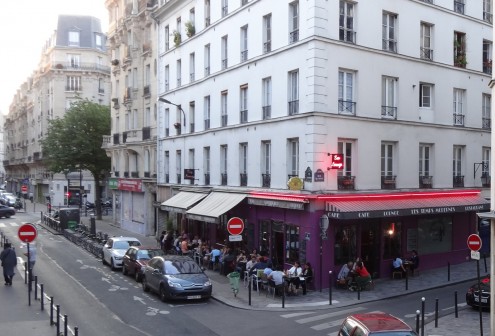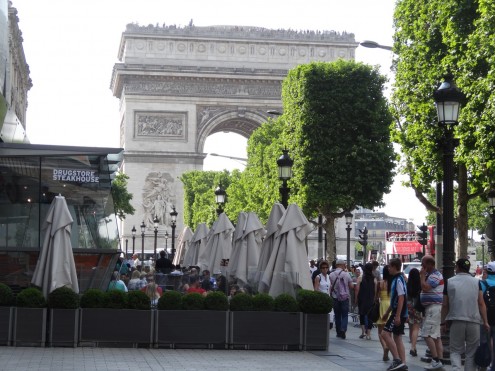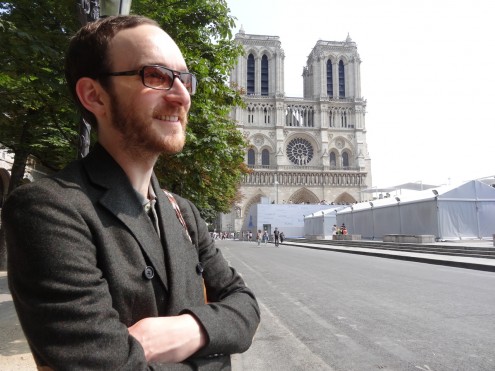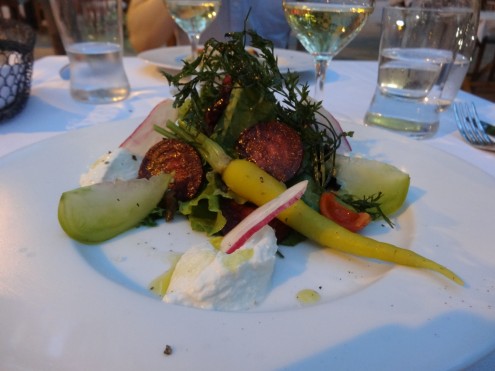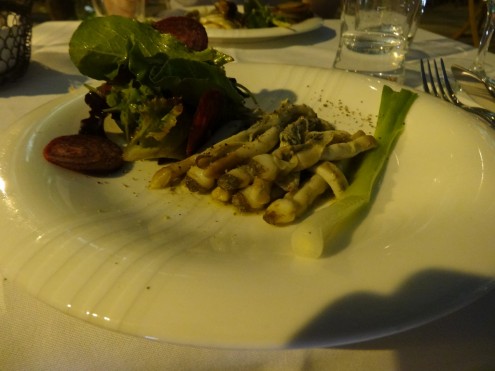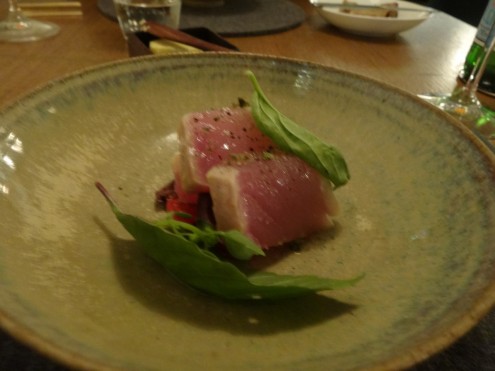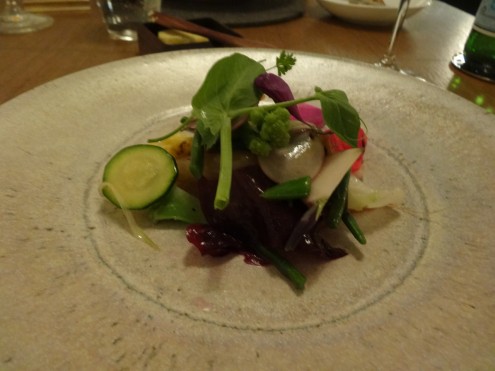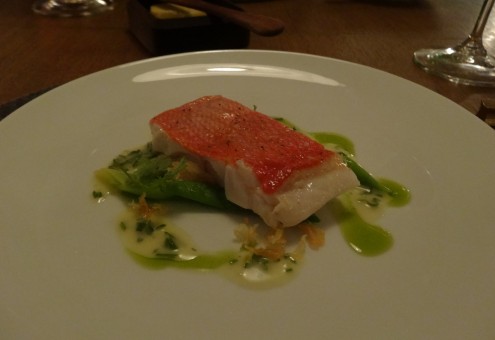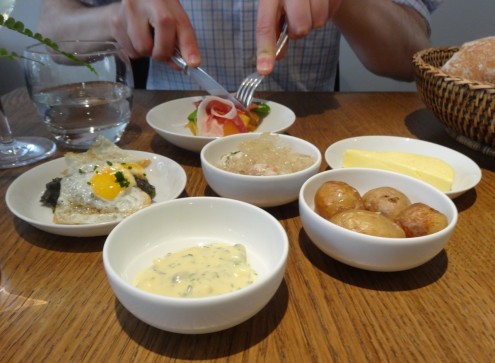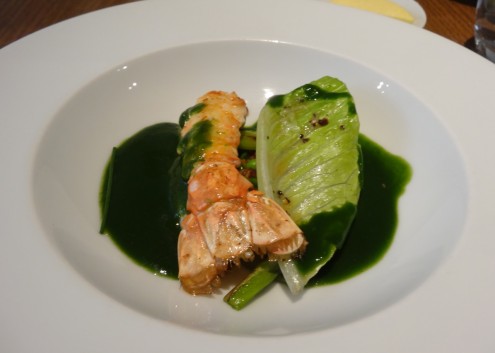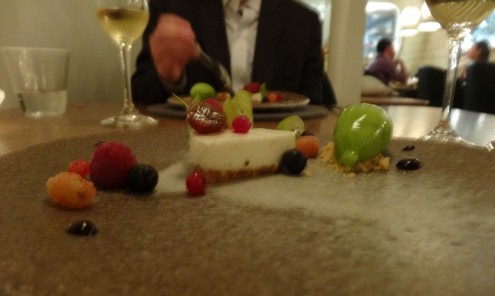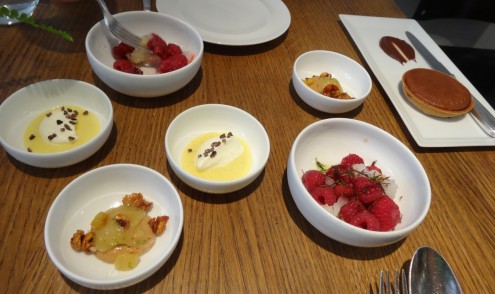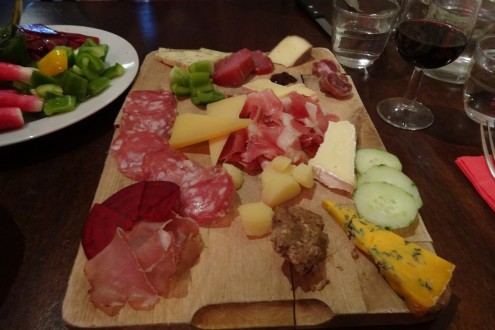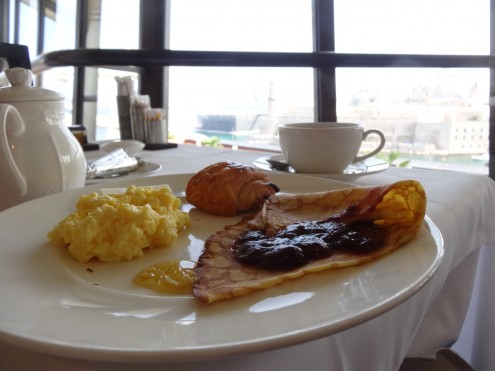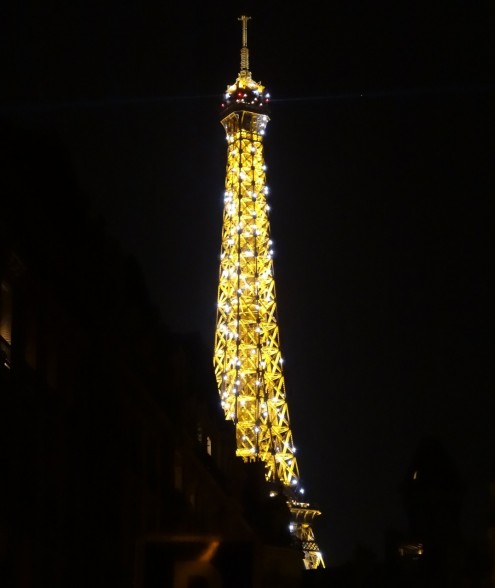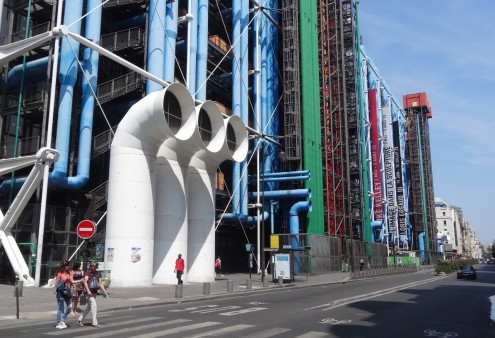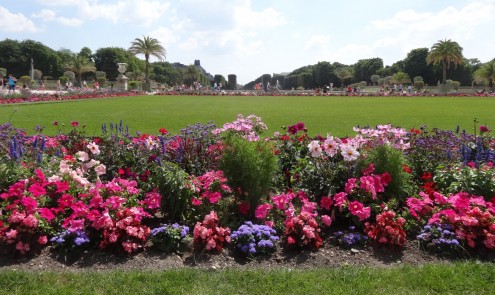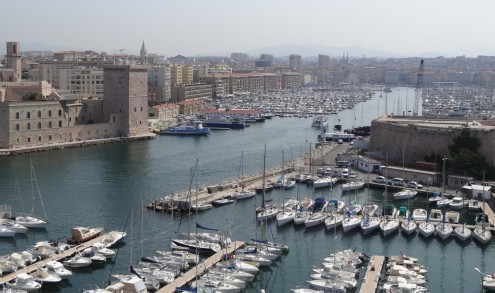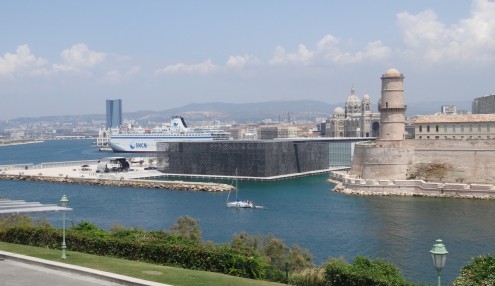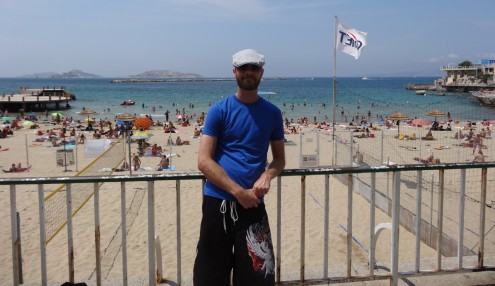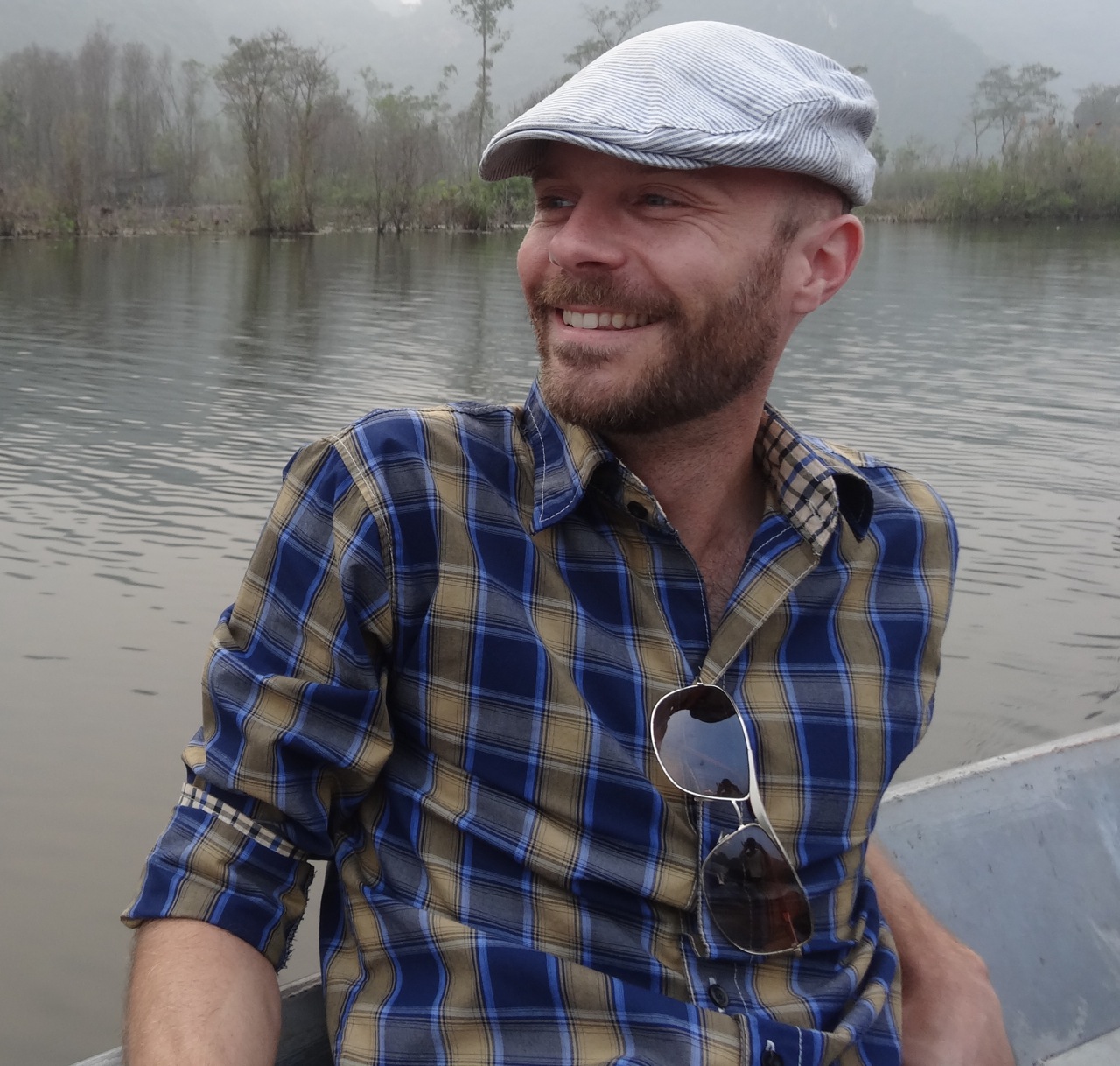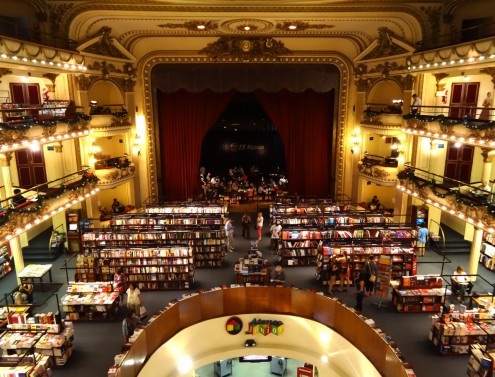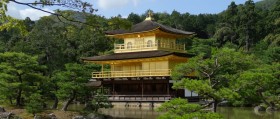Soon after arriving in Kathmandu, it occurred to me ‘I’m back in the Third World, aren’t I?’ It was quite a shock to come from Japan, a country with $50,000 GDP per capita, to Nepal, one with less than $1,000. Kathmandu is an archetypal third world metropolis: unpaved roads, no traffic regulation, no sidewalks, terrible air/noise/visual pollution, incredible heat, unpredictable thunderstorms, men spitting, crowded markets, perpetual noise from motorcycle engines and car horns, scheduled and unscheduled power outages, rickshaws, wandering livestock, piles of trash, crowded and dangerous public transportation, persistent offers for tours/souvenirs/drugs, and restaurant bills that cost 25% of what you expected.
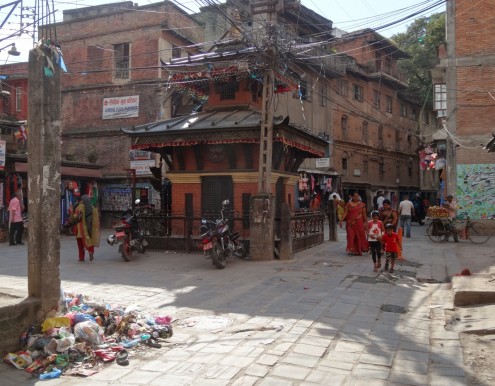
Divinity amongst decay, Kathmandu
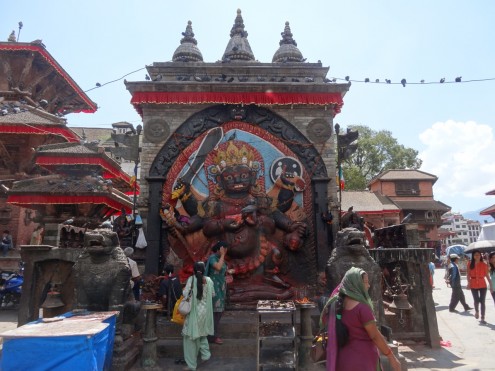
Altar in Durbar Square, Kathmandu
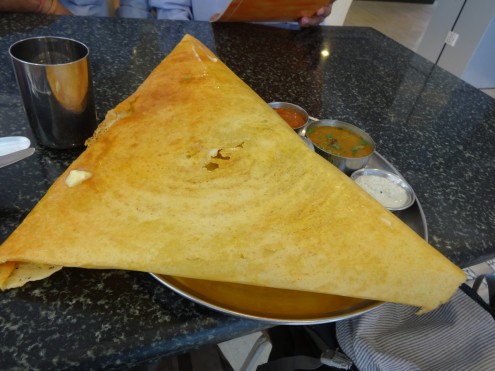
Stuffed Dosa in Kathmandu, size of a colonial hat, $1.85
Having arrived without much of a plan, I was lucky to find that my hotel had its own travel agency. Happily leaving the city after one day, I hopped on a bus to Chitwan National Park which, owing to the awful road conditions and mountainous terrain, managed to take 7 hours to cover the 100-mile distance. Luckily, the park itself was worth the trip. My guide and I took a walk through the park, then stopped for a drink by the riverbank. I have been to several places now, and find that the following things are universally loved: sitting by the water, watching the sun set, and drinking a cold beer on a hot day. If you can do more than one at the same time, all the better.
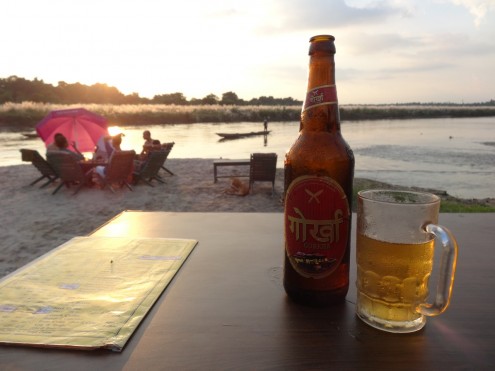
Frosty bottle of Gorkha, Chitwan National Park
The next day, I took a short animal-watching safari in the park with an elephant as my mode of transportation. ‘How did I get here?’ moment: sitting on an elephant and looking down at a rhinoceros. We also saw deer, a peacock, and a monkey. In the afternoon, we took a canoe ride, walked more trails in the park, and visited the elephant breeding center.
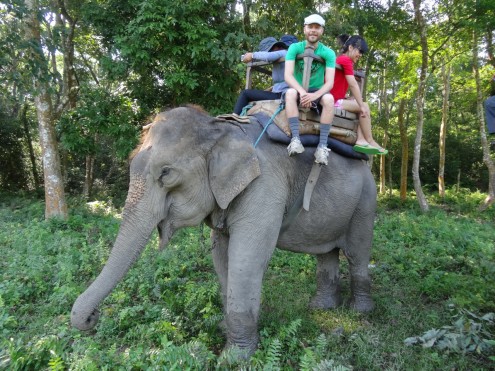
Sitting on the shoulders of giants
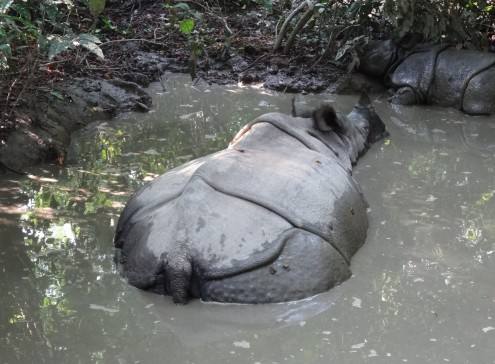
Rhinoceros enjoying a luxurious mud bath
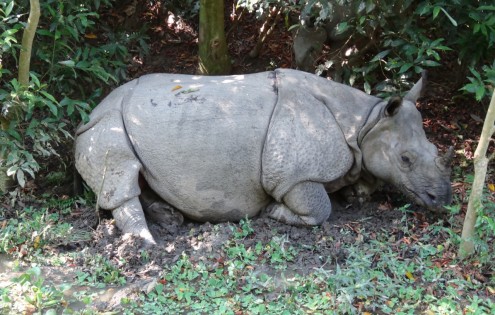
Staying cool
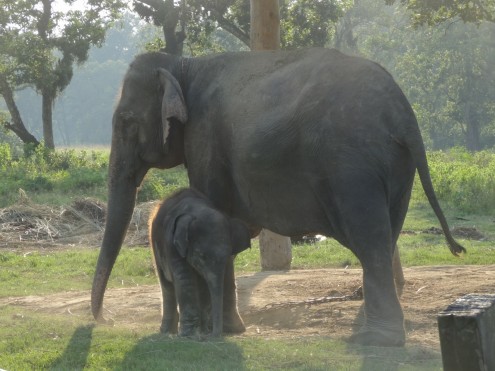
A 3-month baby elephant, already bigger than me
In Pokhara my trekking guide introduced himself as ‘Panza’, and I wondered if that somehow made me ‘Quixote’ on our little adventure. He took me to a sporting shop to rent the necessary provisions: sleeping bag, down jacket, waterproof trousers, walking stick. The next morning, we set off for a 4-day trek from Nayapul to Ghorepani and back.
Trekking is an immense challenge, and finishing a day’s work on the trails feels rewarding. You prove your toughness to yourself. You remind yourself to stay positive. Your energy level sometimes rebounds dramatically, suddenly, and without explanation. Sometimes you get a huge boost from a passerby’s friendly greeting. You make up mantras to encourage yourself. When you get into the zone and your backpack is perfectly in place and nothing hurts and you are dominating the trail, it’s really fun.
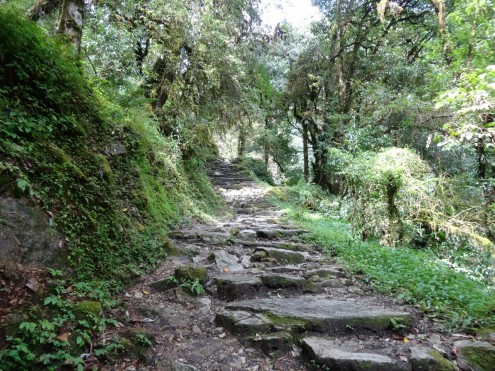
Just keep putting left foot in front of right foot, right foot in front of left. It’s all you can do.
The scenery is often lovely, with tall green hills, waterfalls, and terraced rice fields. Once in a while, the air around you becomes a dense, fluffy whiteness and you realize ‘hey, I’m inside a cloud’ and that’s pretty cool.
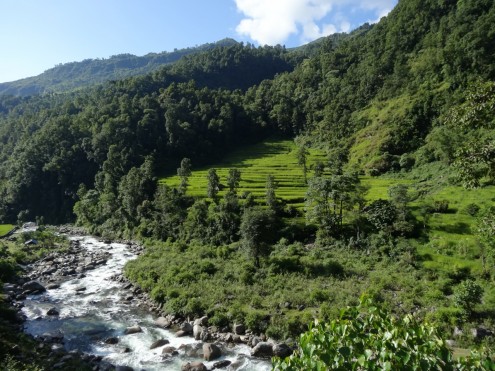
Rice fields along the river
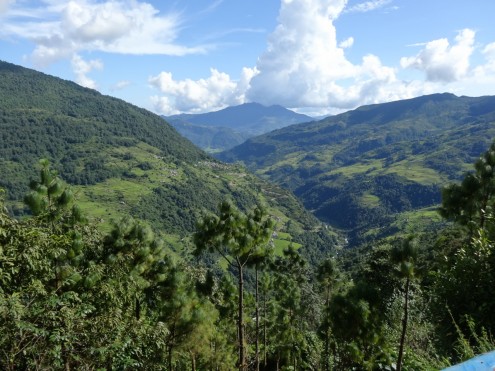
Big green valley
I found the trekking very physically demanding; not with respect to endurance, but rather tolerance for pain. Although we walked for up to 6 hours per day, I rarely felt out of breath or that I couldn’t handle more climbing. However, I did feel pain. At times, I could perfectly visualize the anatomy of my leg muscles because they were each in turn submitting their pleas for me to stop. My upper back and shoulders complained loudly about carrying my backpack. My knees were jellified from long downhill stretches. The trails’ hard rocks, angular and haphazardly arranged, punched up at my feet through the flexible soles of my cross-trainers.
But eventually, there’s the payoff: a view of the Himalayas. We reached that point on the early morning of day 3 at Poon Hill. From there you can see the Himalayan mountains Dhaulagiri and Anapurna I. Regardless of your physical condition before then, this sight makes you feel better, stronger, ready for more.
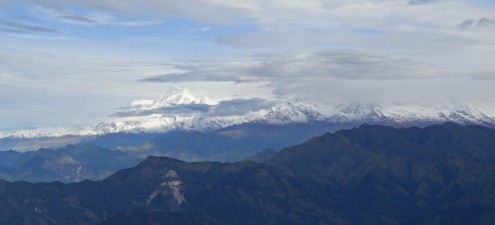
Mt. Dhaulagiri & friends
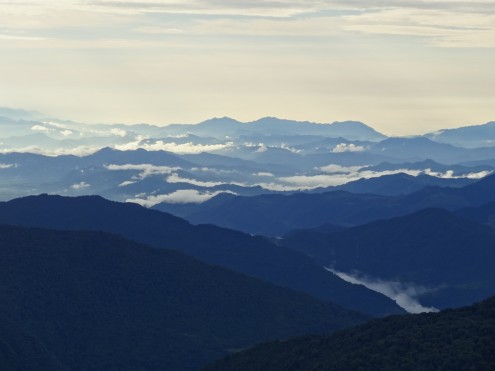
Mysterious hilltops beneath Poon Hill
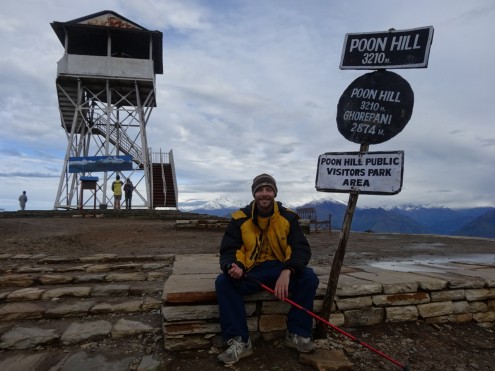
The “high point” of the trek
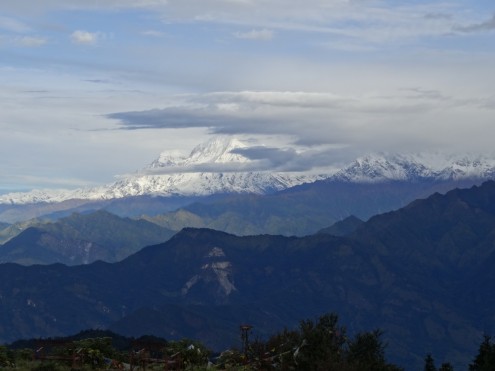
Himalayan peaks
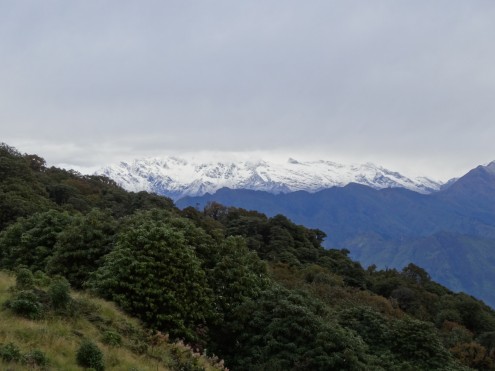
Within sight of the big guys
Trekking in Nepal is adventuresome. It is not glamorous. Glamor is a spotless red carpet spread out over your path; trekking in Nepal is the craps of various animals spread out over your path. Glamor is staying in 5-star hotels; trekking in Nepal is staying in 5-dollar tea houses (with amenities such as one bathroom for all guests, plywood interiors, and no sink). Glamor is opening a walk-in closet of your favorite clothes; trekking in Nepal is pulling on the mostly-dry clothes you will be wearing for the fourth day in a row.
Back in Pokhara, muttering curses at every stair on the way to my fourth-floor hotel room, I felt like an NFL running back on Monday morning. I was happy to be back to civilization (relatively speaking…the power has gone out three times since I checked in). For the next few days, I wish to do much sitting down. Luckily, that’s in the game plan as I’ll be moving into Kopan Monastery for a 10-day introduction to Buddhism course. As my electronic distractions will be collected upon arrival, I will write next shortly after October 12.

